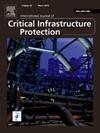Digital twin application in lifecycle security of critical infrastructures: A systematic literature review
IF 5.3
3区 工程技术
Q1 COMPUTER SCIENCE, INFORMATION SYSTEMS
International Journal of Critical Infrastructure Protection
Pub Date : 2025-07-18
DOI:10.1016/j.ijcip.2025.100783
引用次数: 0
Abstract
Critical infrastructures are essential for the functioning of society. However, their increasing connectivity makes them vulnerable to growing cybersecurity threats. Traditional testing methods, such as testbeds, often struggle to accurately replicate real-world complexities and can be expensive to maintain. Although digital twins are gaining attention as a potential solution, providing high-fidelity virtual replicas with simulation, prediction, and control capabilities, their specific role in enhancing cybersecurity for critical infrastructures throughout their lifecycles has not been thoroughly explored. To address this gap, our study conducts a systematic literature review of 43 peer-reviewed papers published between 2013 and 2024 to investigate how digital twins can tackle cybersecurity challenges throughout critical infrastructures’ lifecycles. Our analysis offers a detailed classification of cybersecurity use cases enabled by digital twins, maps these use cases to the lifecycle phases of critical infrastructures, and evaluates the feasibility and justifications of both proposed and implemented solutions as long-term cybersecurity enhancers. Our findings underscore the potential of digital twins to foster a sustainable, long-term partnership with critical infrastructures, leading to improved cybersecurity. Additionally, we propose four future research directions to guide the development of robust digital twin solutions supporting the evolution of these vital systems, their operating contexts, and threat landscapes. To the best of our knowledge, this is the first study investigating digital twins’ role as a lifelong cybersecurity enhancer for critical infrastructures.
数字孪生在关键基础设施生命周期安全中的应用:系统的文献综述
关键的基础设施对社会的运作至关重要。然而,它们日益增长的连通性使它们容易受到日益增长的网络安全威胁。传统的测试方法,比如测试台,通常很难准确地复制真实世界的复杂性,并且维护起来很昂贵。虽然数字孪生作为一种潜在的解决方案正在受到关注,提供具有模拟、预测和控制能力的高保真虚拟复制品,但它们在整个生命周期中增强关键基础设施网络安全方面的具体作用尚未得到彻底探讨。为了解决这一差距,我们的研究对2013年至2024年间发表的43篇同行评议论文进行了系统的文献综述,以研究数字孪生如何在关键基础设施的整个生命周期中应对网络安全挑战。我们的分析提供了数字孪生支持的网络安全用例的详细分类,将这些用例映射到关键基础设施的生命周期阶段,并评估了提议和实施的解决方案作为长期网络安全增强器的可行性和合理性。我们的研究结果强调了数字孪生在促进与关键基础设施的可持续长期合作伙伴关系,从而改善网络安全方面的潜力。此外,我们提出了四个未来的研究方向,以指导强大的数字孪生解决方案的发展,支持这些重要系统的发展,其操作环境和威胁景观。据我们所知,这是第一个调查数字孪生作为关键基础设施终身网络安全增强器角色的研究。
本文章由计算机程序翻译,如有差异,请以英文原文为准。
求助全文
约1分钟内获得全文
求助全文
来源期刊

International Journal of Critical Infrastructure Protection
COMPUTER SCIENCE, INFORMATION SYSTEMS-ENGINEERING, MULTIDISCIPLINARY
CiteScore
8.90
自引率
5.60%
发文量
46
审稿时长
>12 weeks
期刊介绍:
The International Journal of Critical Infrastructure Protection (IJCIP) was launched in 2008, with the primary aim of publishing scholarly papers of the highest quality in all areas of critical infrastructure protection. Of particular interest are articles that weave science, technology, law and policy to craft sophisticated yet practical solutions for securing assets in the various critical infrastructure sectors. These critical infrastructure sectors include: information technology, telecommunications, energy, banking and finance, transportation systems, chemicals, critical manufacturing, agriculture and food, defense industrial base, public health and health care, national monuments and icons, drinking water and water treatment systems, commercial facilities, dams, emergency services, nuclear reactors, materials and waste, postal and shipping, and government facilities. Protecting and ensuring the continuity of operation of critical infrastructure assets are vital to national security, public health and safety, economic vitality, and societal wellbeing.
The scope of the journal includes, but is not limited to:
1. Analysis of security challenges that are unique or common to the various infrastructure sectors.
2. Identification of core security principles and techniques that can be applied to critical infrastructure protection.
3. Elucidation of the dependencies and interdependencies existing between infrastructure sectors and techniques for mitigating the devastating effects of cascading failures.
4. Creation of sophisticated, yet practical, solutions, for critical infrastructure protection that involve mathematical, scientific and engineering techniques, economic and social science methods, and/or legal and public policy constructs.
 求助内容:
求助内容: 应助结果提醒方式:
应助结果提醒方式:


